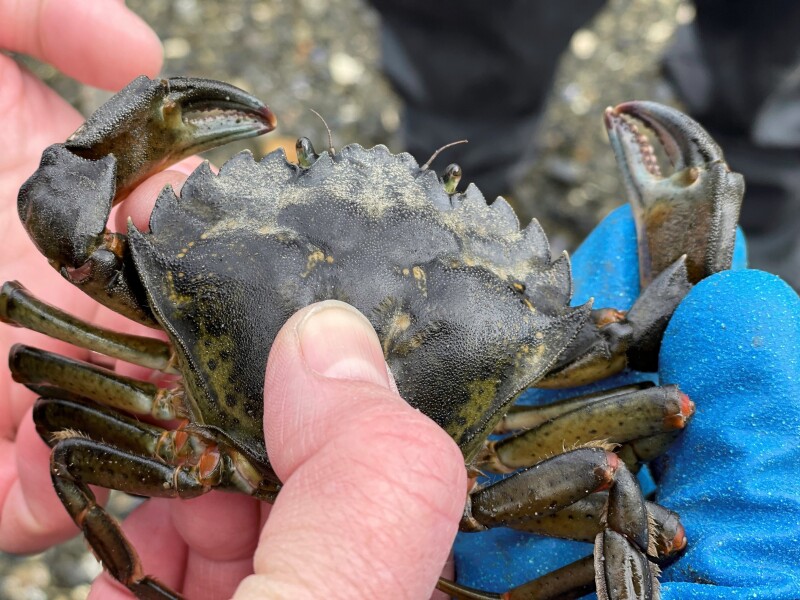The invasive European Green Crabs that have wreaked havoc on clam fisheries in Maine and the West Coast have now reached Alaska, where they could threaten subsistence, personal use, and commercial fisheries, including salmon.
“I worry about the salmonids,” says Tammy Davis, Invasive Species Program coordinator at the Alaska Dept. of Fish & Game (ADF&G). “I don’t have any evidence that they are competing for food at certain life stages, but the green crabs tear up the eelgrass that provides vital habitat for juvenile salmon and their prey, and in an already stressed ecosystem, having another stressor can affect the whole food web.”
So far, the green crabs are far less abundant than they are in Washington State, but Davis notes that Southeast Alaska has the kind of real estate green crabs like. “In Southeast Alaska, we have an estimated 19,000 miles of coastline and much of it is suitable habitat for green crabs.” She adds that many of the islands and passages of the Southeast archipelago have estuaries with eelgrass meadows protected from heavy surf, providing food and protection for green crabs.
According to Linda Shaw, a National Oceanic and Atmospheric Administration wildlife biologist in the Alaska region, on July 19, 2022, the Metlakatla Indian Community discovered three crab shells from the invasive green crab during a survey of Annette Islands Reserve. “We did some immediate trapping,” says Shaw. “And based on the carapace sizes, we estimate that they had been there for at least two years.”
“In August 2024, after invasive crabs were found in Bostwick Inlet, ADF&G had several teams deploy over 100 traps in the inlet, as is prescribed by the Alaska Early Detection and Rapid Response Plan,” says Davis. “After eight days of trapping effort, 33 green crabs of various year classes had been removed.”
The European green crabs have been found along the U.S. East Coast since the 1800s, but their numbers have increased as the waters have become warmer. On the West Coast, they were first detected around San Francisco Bay in the late 1980s and have steadily moved north. “In Alaska, we’re at the leading edge of green crab spread,” says Davis. “We have large remote areas to try to monitor, with limited capacity. Thankfully, we have lots of partners who care and are engaged. Collectively, we operate under the umbrella of the Alaska Invasive Species Partnership (AKISP). Key partners are Kachemak Bay National Estuarine Research Reserve, Metlakatla Indian Community and numerous Alaska Native tribal entities, Prince William Sound Regional Citizens’ Advisory Council, local communities, and others.”
Davis reports that the AKISP European green crab monitoring network is monitoring nearly 60 locations from Southeast to the Aleutians. “From May to September, over 20 community-based monitors set 5 Fukui traps, which are general purpose traps, and one minnow trap, once a month and let them soak for 24 hours,” says Davis. “The goal is to get everyone doing the same thing so that the science is consistent.” To allocate limited monitoring resources most efficiently, Davis and her team are looking at currents and habitats to get an idea of where the green crabs could appear next.
She adds that although the impacts from green crab in Alaska are yet to be determined. “The larvae are riding the currents up from Washington and British Columbia every year, so we know we can’t eradicate them, but there is hope for functional eradication,” says Davis. “It involves intensive trapping to suppress invasive crab populations. We hope to keep their numbers down to where they don’t have too much of an impact on our ecosystem.”







